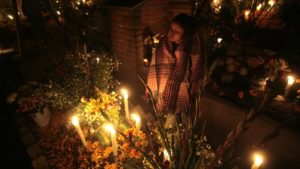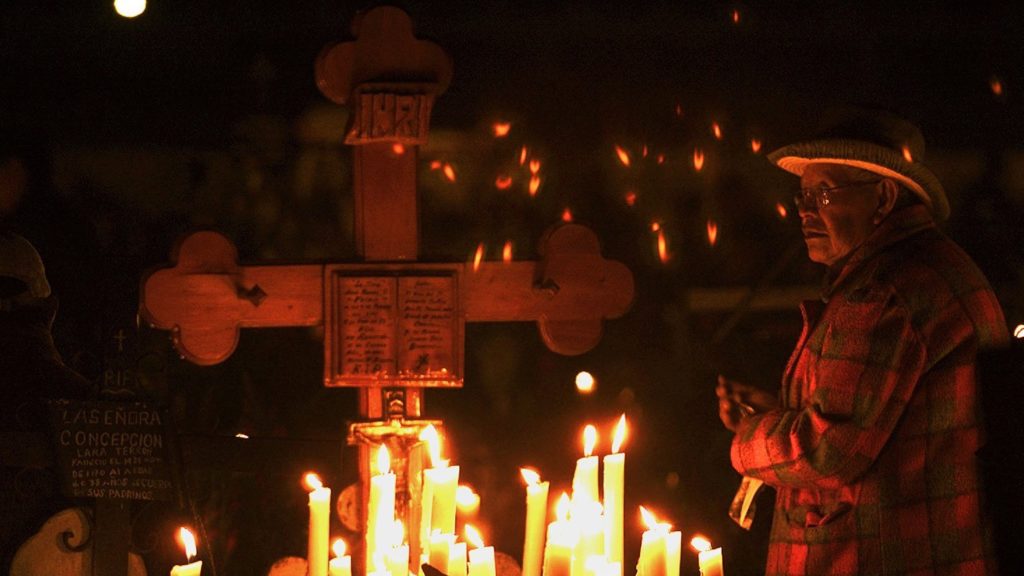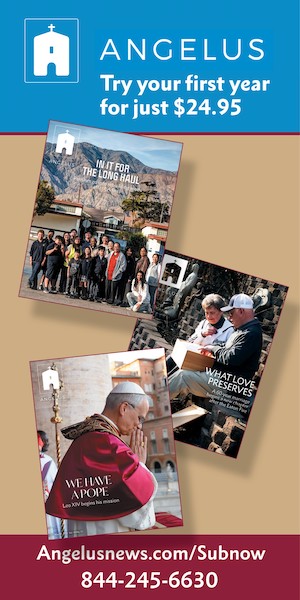Many parishioners at San Antonio de las Huertas Parish in Mexico City remember their deceased loved ones by building altars in their homes for Day of the Dead.
The altars burst with marigolds, are often adorned with colourful "papel picado," or decorative cut paper, and usually feature food and drink, including Coca-Cola, tequila and beer. People believe their relatives return the nights of Nov. 1 and Nov. 2 to reunite with family.
Father Pedro Lira, pastor at San Antonio de las Huertas, supports the practice of building altars. But he also encourages his congregation to pray for their deceased loved ones and to remember the promise of eternal life.
"Upon lighting the candles many people stop and pray the Our Father without really knowing how to pray at the altar," Father Lira told OSV News. "It's the confidence of saying, 'Even after death, I can do something for you?'"
Day of the Dead – famed Dia de los Muertos – marks one of Mexico's deepest cultural traditions, dating to pre-Hispanic times, in which people commemorate and commune with their deceased loved ones. Mexicans build altars and visit graveyards for candlelight vigils.
Many Mexicans visit churches, too, where prayers are said for All Saints' Day on Nov. 1 and All Souls' Day on Nov. 2.
"The church commemorates, does not celebrate, the faithful who have departed," Father Lira said. "We entrust them to God's mercy. We no longer know if they share in his glory, but we do entrust them to God's providence. And that is why as a church we pray for them."
Death holds a unique place in Mexican culture. Pre-Hispanic populations celebrated a version of Day of the Dead around harvest time, according to research. Early Catholic evangelists "Christianized" that remembrance of the dead, according to Father Lira, who emphasized, "The Christian message is death as a passage to eternal life. … Mexican culture did not see life after death."

The tradition has become a spectacle, too – all thanks to the 2015 James Bond movie, "Spectre," which featured an apocryphal Day of the Dead parade. Mexican tourism officials copied the parade – complete with giant skeleton marionettes – which draws throngs to central Mexico City.
Onlookers paint their faces black and white and dress in La Catrina costumes -- elegant skeletons previously used to mock the Mexicans aspiring to be Europeans. Tourists, meanwhile, increasingly make trips to graveyards to witness the festivities, bringing much needed economic activity to downtrodden rural towns, but disrupting commemorations.
"The people of Oaxaca (state) have managed to create a second Day of the Dead that is exclusively meant for tourists and strangers," Shawn Haley, a Canadian anthropologist studying the holiday, told OSV News. The alternative Day of the Dead "redirects the strangers focus away from the village celebrations that can then remain restricted to the community and family."
Observers say a renewed sense of pride in Mexican traditions, along with movies such as "Coco," have hastened the embrace of Day of the Dead. The renewed interest in Day of the Dead, meanwhile, has largely diminished interest in Halloween, which had been brought back by migrants and had been gaining ground until recently. "It is viewed as a quaint American holiday," Haley said.
Mexican church leaders have long warned of the rise of Halloween. Father Andrés Larios said a group of young people in his parish in Michoacán even tried to turn the parish event hall into a haunted house -- something he used as a teaching opportunity.
"The church much prefers promoting that one day we will meet our loved ones who died for this world, but who continue living in the other, rather than getting rid of all these things that come from the United States" such as Halloween, said Andrés Larios, a parish priest in the Diocese of Apatzingán.
Practicing Catholics still refer to Day of the Dead as All Saints, which remembers the saints, and All Souls, which remembers all believers, to "distinguish themselves from nonpracticing Catholics," according to Haley, though "the actual celebration is exactly the same."
He added, "In non-Catholic homes, the deceased loved ones are expected to return home where in Catholic homes, the altar becomes more of a memorial to the deceased. Less celebrating and more remembering."
Priests are emphasizing faith, along with remembrance.
"It's very important to recall the importance of praying for the saints on Nov. 1 and praying for the dead on Nov. 2," Father Alan Camargo, spokesman for the Diocese of Matamoros-Reynosa, told OSV News.
"The Catholic faith, at its core, is Christ who dies and conquers death," he continued, adding that "altars to the dead, skulls, those don't clash with the Christian faith as long as we discover the importance of respect for life and also respect for death."

